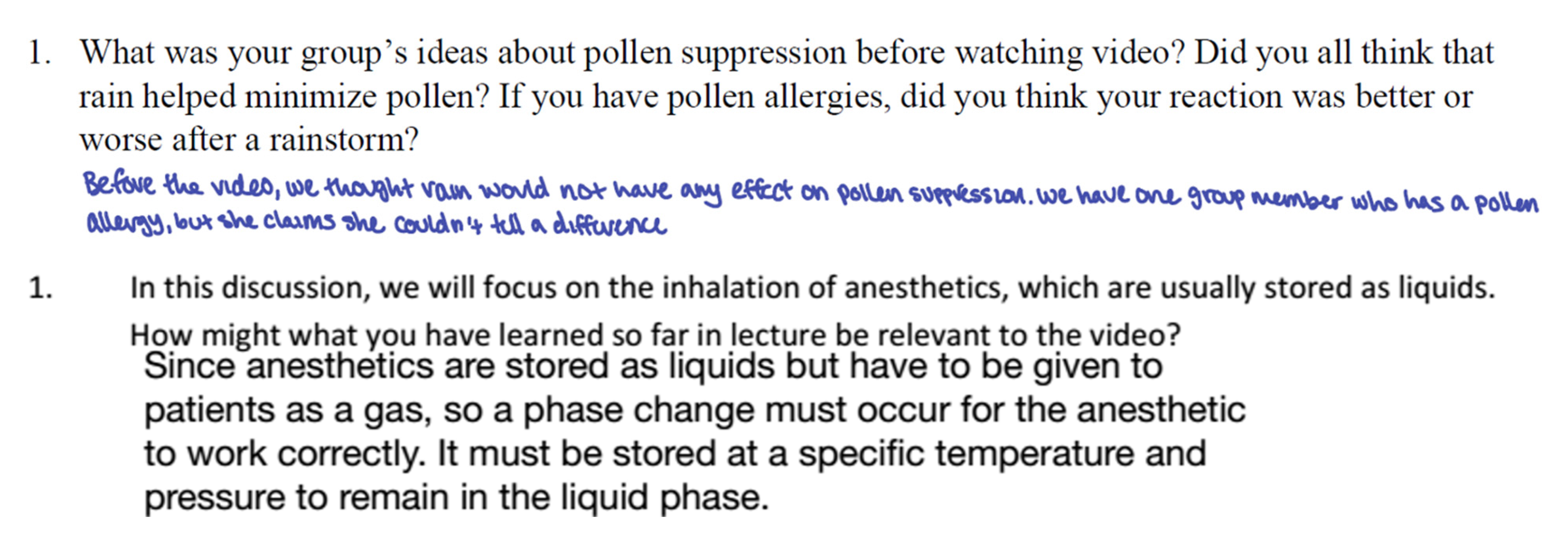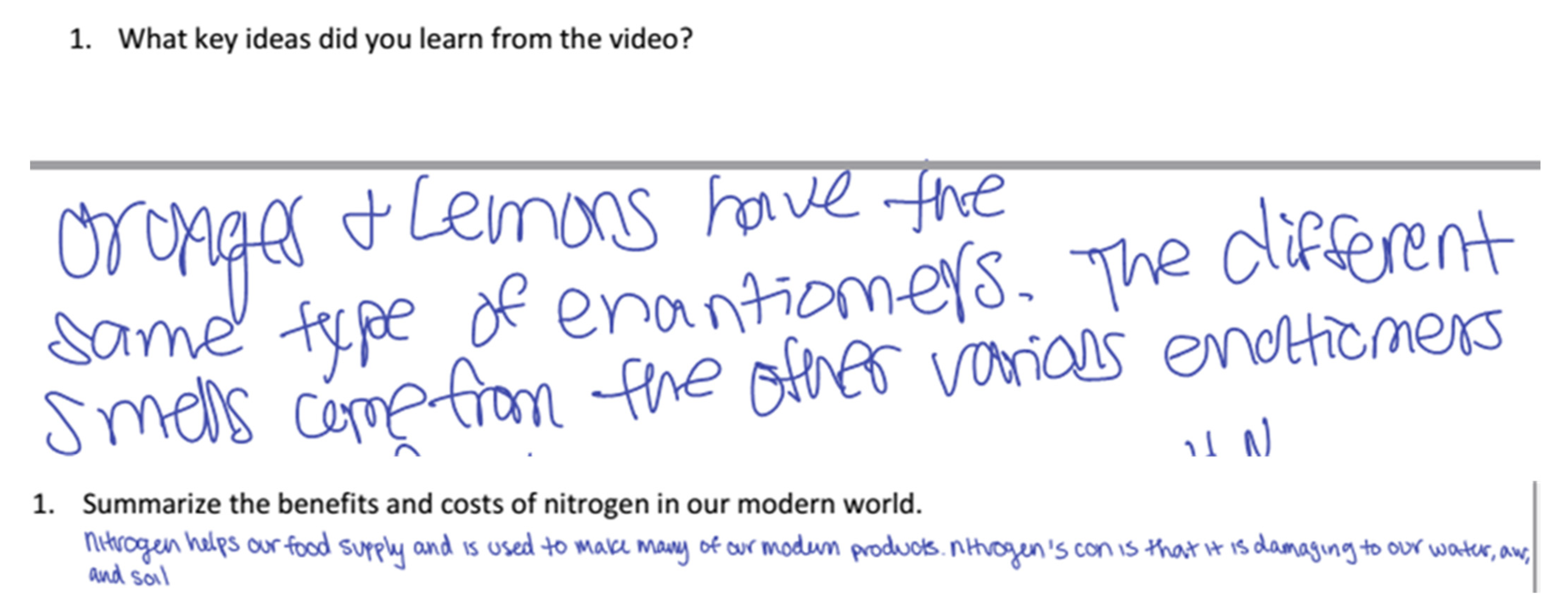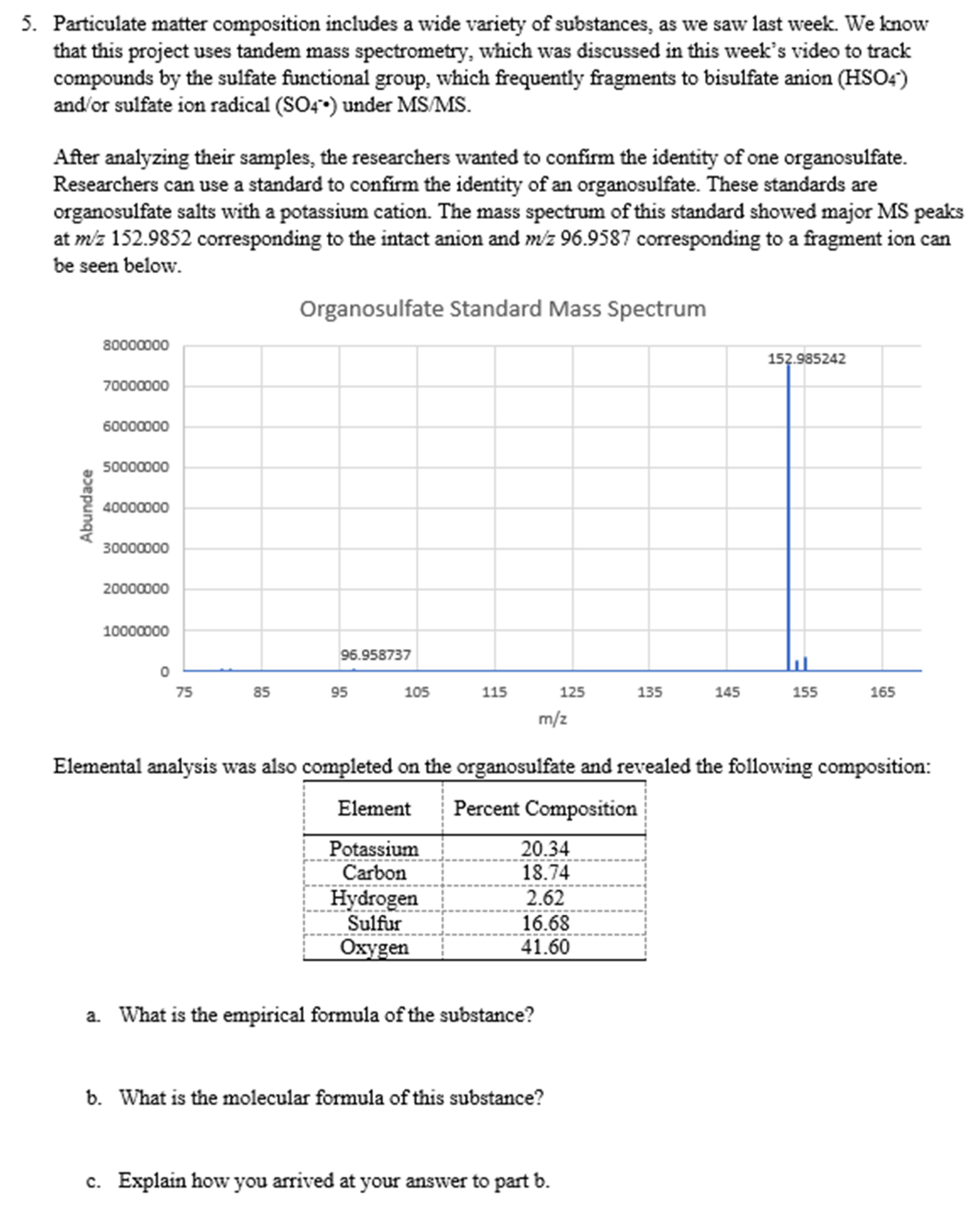Creating Meaningful Learning Opportunities through Incorporating Local Research into Chemistry Classroom Activities
Abstract
:1. Introduction
1.1. Meaningful Learning to Promote Knowledge Integration
1.2. Incorporating Research into the Curriculum Benefits Students
1.3. Atmospheric Chemistry Is a Timely Real-Life Context
2. Materials and Methods
2.1. Classroom Setting
2.2. Theoretical Framework
2.3. Activity Development
2.3.1. Activity Selection
2.3.2. Activity Design
2.4. Data Collection
2.5. Analysis
2.5.1. Activity Design Coding
2.5.2. Student Work Coding
3. Results and Discussion
3.1. Revised Activities Promoted Knowledge Integration
3.2. Students Make Connections When Prompted
3.3. Students Were Generally Dismissive of Contextual Information
3.4. Facilitation Did Not Promote Engagement
4. Limitations
5. Implications for Research and Practice
5.1. Practice
5.2. Research
6. Conclusions
Supplementary Materials
Author Contributions
Funding
Institutional Review Board Statement
Informed Consent Statement
Data Availability Statement
Acknowledgments
Conflicts of Interest
References
- Bretz, S.L. Novak’s Theory of Education: Human Constructivism and Meaningful Learning. J. Chem. Educ. 2001, 78, 1107. [Google Scholar] [CrossRef]
- Ebenezer, J.V. Making chemistry learning more meaningful. J. Chem. Educ. 1992, 69, 464. [Google Scholar] [CrossRef]
- Marzano, R.J.; Kendall, J.S. (Eds.) The New Taxonomy of Educational Objectives, 2nd ed.; Corwin: Thousand Oaks, CA, USA, 2006. [Google Scholar]
- Reid, J.W.; Gunes, Z.D.K.; Fateh, S.; Fatima, A.; Macrie-Shuck, M.; Nennig, H.T.; Quintanilla, F.; States, N.E.; Syed, A.; Cole, R.; et al. Investigating patterns of student engagement during collaborative activities in undergraduate chemistry courses. Chem. Educ. Res. Pract. 2021, 23, 173–188. [Google Scholar] [CrossRef]
- Wenzel, T.J.; Larive, C.K.; Frederick, K.A. Role of Undergraduate Research in an Excellent and Rigorous Undergraduate Chemistry Curriculum. J. Chem. Educ. 2011, 89, 7–9. [Google Scholar] [CrossRef]
- Hunter, A.-B.; Laursen, S.L.; Seymour, E. Becoming a scientist: The role of undergraduate research in students’ cognitive, personal, and professional development. Sci. Educ. 2006, 91, 36–74. [Google Scholar] [CrossRef]
- Olson, S.; Riordan, D.G. Engage to Excel: Producing One Million Additional College Graduates with Degrees in Science, Technology, Engineering, and Mathematics. Report to the President; Executive Office of the President. 2012. Available online: https://eric.ed.gov/?id=ED541511 (accessed on 17 November 2022).
- Smith, B. Mentoring At-Risk Students through the Hidden Curriculum of Higher Education; Lexington Books: Blue Ridge Summit, PA, USA, 2013. [Google Scholar]
- Eagan, M.K.; Hurtado, S.; Chang, M.J.; Garcia, G.A.; Herrera, F.A.; Garibay, J.C.; Eagan, J.M.K. Making a Difference in Science Education: The Impact of Undergraduate Research Programs. Am. Educ. Res. J. 2013, 50, 683–713. [Google Scholar] [CrossRef] [PubMed]
- Bangera, G.; Brownell, S.E. Course-Based Undergraduate Research Experiences Can Make Scientific Research More Inclusive. CBE—Life Sci. Educ. 2014, 13, 602–606. [Google Scholar] [CrossRef] [PubMed]
- Russell, S.H.; Hancock, M.P.; McCullough, J. Benefits of Undergraduate Research Experiences. Science 2007, 316, 548–549. [Google Scholar] [CrossRef]
- Linn, M.C.; Palmer, E.; Baranger, A.; Gerard, E.; Stone, E. Undergraduate research experiences: Impacts and opportunities. Science 2015, 347, 1261757. [Google Scholar] [CrossRef]
- Carpi, A.; Ronan, D.M.; Falconer, H.M.; Lents, N.H. Cultivating minority scientists: Undergraduate research increases self-efficacy and career ambitions for underrepresented students in STEM. J. Res. Sci. Teach. 2016, 54, 169–194. [Google Scholar] [CrossRef]
- Shaffer, C.D.; Alvarez, C.J.; Bednarski, A.E.; Dunbar, D.; Goodman, A.L.; Reinke, C.; Rosenwald, A.G.; Wolyniak, M.J.; Bailey, C.; Barnard, D.; et al. A Course-Based Research Experience: How Benefits Change with Increased Investment in Instructional Time. CBE—Life Sci. Educ. 2014, 13, 111–130. [Google Scholar] [CrossRef] [PubMed]
- Auchincloss, L.C.; Laursen, S.; Branchaw, J.L.; Eagan, K.; Graham, M.; Hanauer, D.I.; Lawrie, G.; McLinn, C.M.; Pelaez, N.; Rowland, S.; et al. Assessment of Course-Based Undergraduate Research Experiences: A Meeting Report. CBE—Life Sci. Educ. 2014, 13, 29–40. [Google Scholar] [CrossRef] [PubMed]
- Desai, K.V.; Gatson, S.N.; Stiles, T.W.; Stewart, R.H.; Laine, G.A.; Quick, C.M. Integrating research and education at research-extensive universities with research-intensive communities. Adv. Physiol. Educ. 2008, 32, 136–141. [Google Scholar] [CrossRef] [PubMed]
- Wood, W.B. Inquiry-Based Undergraduate Teaching in the Life Sciences at Large Research Universities: A Perspective on the Boyer Commission Report. Cell Biol. Educ. 2003, 2, 112–116. [Google Scholar] [CrossRef] [PubMed]
- Sommers, A.S.; Miller, A.W.; Gift, A.D.; Richter-Egger, D.L.; Darr, J.P.; Cutucache, C.E. CURE Disrupted! Takeaways from a CURE without a Wet-Lab Experience. J. Chem. Educ. 2020, 98, 357–367. [Google Scholar] [CrossRef]
- National Research Council [NRC]. A Framework for K-12 Science Education: Practices, Crosscutting Concepts and Core Ideas; National Academy Press: Washington, DC, USA, 2012; p. 383. [Google Scholar]
- Home|Stone Research Group|Department of Chemistry|College of Liberal Arts and Sciences|The University of Iowa. Available online: https://chem.uiowa.edu/stone-research-group (accessed on 10 November 2022).
- Hasenecz, E.S.; Jayarathne, T.; Pendergraft, M.A.; Santander, M.V.; Mayer, K.J.; Sauer, J.; Lee, C.; Gibson, W.S.; Kruse, S.M.; Malfatti, F.; et al. Marine Bacteria Affect Saccharide Enrichment in Sea Spray Aerosol during a Phytoplankton Bloom. ACS Earth Space Chem. 2020, 4, 1638–1649. [Google Scholar] [CrossRef]
- Hettiyadura, A.P.S.; Jayarathne, T.; Baumann, K.; Goldstein, A.H.; de Gouw, J.A.; Koss, A.; Keutsch, F.N.; Skog, K.; Stone, E.A. Qualitative and Quantitative Analysis of Atmospheric Organosulfates in Centreville, Alabama. Atmos. Chem. Phys. 2017, 17, 1343–1359. [Google Scholar] [CrossRef]
- Hettiyadura, A.P.S.; Stone, E.A.; Kundu, S.; Baker, Z.; Geddes, E.; Richards, K.; Humphry, T. Determination of Atmospheric Organosulfates Using HILIC Chromatography with MS Detection. Atmos. Meas. Tech. 2015, 8, 2347–2358. [Google Scholar] [CrossRef]
- Hughes, D.D.; Christiansen, M.B.; Milani, A.; Vermeuel, M.P.; Novak, G.A.; Alwe, H.D.; Dickens, A.F.; Pierce, R.B.; Millet, D.B.; Bertram, T.H.; et al. PM2.5 Chemistry, Organosulfates, and Secondary Organic Aerosol during the 2017 Lake Michigan Ozone Study. Atmos. Environ. 2021, 244, 117939. [Google Scholar] [CrossRef]
- Hughes, D.D.; Mampage, C.B.A.; Jones, L.M.; Liu, Z.; Stone, E.A. Characterization of Atmospheric Pollen Fragments during Springtime Thunderstorms. Environ. Sci. Technol. Lett. 2020, 7, 409–414. [Google Scholar] [CrossRef]
- Rathnayake, C.M.; Metwali, N.; Jayarathne, T.; Kettler, J.; Huang, Y.; Thorne, P.S.; O’Shaughnessy, P.T.; Stone, E.A. Influence of Rain on the Abundance of Bioaerosols in Fine and Coarse Particles. Atmos. Chem. Phys. 2017, 17, 2459–2475. [Google Scholar] [CrossRef]
- Association, A.L. Particle Pollution. Available online: https://www.lung.org/clean-air/outdoors/what-makes-air-unhealthy/particle-pollution (accessed on 29 November 2022).
- Particle Pollution|Air|CDC. Available online: https://www.cdc.gov/air/particulate_matter.html (accessed on 29 November 2022).
- United States Environmental Protection Agency. What Is Particle Pollution? Available online: https://www.epa.gov/pmcourse/what-particle-pollution (accessed on 29 November 2022).
- Talanquer, V.; Pollard, J. Let’s teach how we think instead of what we know. Chem. Educ. Res. Pract. 2010, 11, 74–83. [Google Scholar] [CrossRef]
- Chemical Thinking. Available online: https://sites.google.com/site/chemicalthinking/ (accessed on 10 November 2022).
- Priniski, S.J.; Hecht, C.A.; Harackiewicz, J.M. Making Learning Personally Meaningful: A New Framework for Relevance Research. J. Exp. Educ. 2017, 86, 11–29. [Google Scholar] [CrossRef] [PubMed]
- Bloom, B. Taxonomy of Educational Objectives, Handbook I: Cognitive Domain—01IOWA—University of Iowa. Available online: https://search.lib.uiowa.edu (accessed on 20 December 2022).
- Toledo, S.; Dubas, J.M. Encouraging Higher-Order Thinking in General Chemistry by Scaffolding Student Learning Using Marzano’s Taxonomy. J. Chem. Educ. 2015, 93, 64–69. [Google Scholar] [CrossRef]
- Toledo, S.; Dubas, J.M. A Learner-Centered Grading Method Focused on Reaching Proficiency with Course Learning Outcomes. J. Chem. Educ. 2017, 94, 1043–1050. [Google Scholar] [CrossRef]
- Amer, A. Reflections on Bloom’s Revised Taxonomy. Electron. J. Res. Ed. Psychol. 2006, 4, 213–230. [Google Scholar]
- MAXQDA|All-In-One Qualitative & Mixed Methods Data Analysis Tool. MAXQDA. Available online: http://www.maxqda.com/ (accessed on 7 October 2018).
- Merriam, S.B. Qualitative Research: A Guide to Design and Implementation; Sharan, B., Elizabeth, M., Tisdell, J., Eds.; Jossey-Bass higher and adult education series; Jossey-Bass: San Francisco, CA, USA, 2016. [Google Scholar]
- Reynders, G.; Lantz, J.; Ruder, S.M.; Stanford, C.L.; Cole, R.S. Rubrics to assess critical thinking and information processing in undergraduate STEM courses. Int. J. STEM Educ. 2020, 7, 9. [Google Scholar] [CrossRef]
- Czajka, D.; Reynders, G.; Stanford, C.; Cole, R.; Lantz, J.; Ruder, S.M. A Novel Rubric Format for Providing Feedback on Process Skills to STEM Undergraduate Students|NSTA. Available online: https://www.nsta.org/journal-college-science-teaching/journal-college-science-teaching-julyaugust-2021/novel-rubric (accessed on 8 December 2022).






| Week | Topics Discussed | Research Alignment |
|---|---|---|
| Week 4 | Identifying elements/compounds, writing molecular formulas | Identifying compounds in particulate matter and quantifying their concentrations |
| Week 5 | Writing chemical formulas, mass spectrum data, stoichiometry, empirical formulas to molecular formula | Determining concentrations of compounds in particulate matter and using mass spectrometry data to confirm the identity of compounds in particulate matter |
| Week 6 | Calculating frequency and energy, emission, absorption, calculating photons | Using fluorescence spectrometry to identify particle types in pollen |
| Week 13 | Particulate representations of reactions, writing and balancing chemical reactions | Understanding chemical reactions that take place in seawater |
| Initial Questions | Main Body Questions | Reflection | ‘Continuing On’ Questions | |
|---|---|---|---|---|
| Original Activities | Prompt review/summary of pre-class material | Guide students to achieve learning outcomes—data for analysis comes from a variety of sources/contexts | Guides students to reflect on proficiency in professional skills | Provides additional opportunities to master material, data for analysis comes from a variety of sources/contexts |
| Revised Activities | Promote connections between pre-class material, content, and relevance to research/daily life | Guide students to achieve learning outcomes—data for analysis comes from research context | Guides students to reflect on proficiency in professional skills | Provides additional opportunities to master material, data for analysis situated in local research data and continues theme |
| Activity | Original Week 4 | Revised Week 4 | Original Week 5 | Revised Week 5 | Original Week 6 | Revised Week 6 | Original Week 13 | Revised Week 13 |
|---|---|---|---|---|---|---|---|---|
| Retrieval | 3 (33%) | 2 (18%) | 0 (0%) | 0 (0%) | 4 (50%) | 6 (50%) | 2 (13%) | 1 (5%) |
| Comprehension | 3 (33%) | 4 (36%) | 5 (100%) | 3 (30%) | 3 (38%) | 1 (8%) | 11 (73%) | 9 (47%) |
| Analysis | 3 (33%) | 2 (18%) | 0 (0%) | 5 (50%) | 1 (13%) | 4 (33) | 2 (13%) | 6 (32%) |
| Knowledge Utilization | 0 (0%) | 1 (9%) | 0 (0%) | 0 (0%) | 0 (0%) | 0 (0%) | 0 (0%) | 1 (5%) |
| Metacognition | 0 (0%) | 2 (18%) | 0 (0%) | 2 (20%) | 0 (0%) | 1 (8%) | 0 (0%) | 2 (11%) |
| Total Questions | 9 | 11 | 5 | 10 | 8 | 12 | 15 | 19 |
| Activity | Original Week 4 | Revised Week 4 | Original Week 5 | Revised Week 5 | Original Week 6 | Revised Week 6 | Original Week 13 | Revised Week 13 |
|---|---|---|---|---|---|---|---|---|
| Retrieval | 7 (54%) | 3 (16%) | 0 (0%) | 1 (6%) | 5 (42%) | 6 (35%) | 3 (14%) | 2 (8%) |
| Comprehension | 3 (23%) | 9 (47%) | 5 (63%) | 4 (24%) | 4 (33%) | 4 (24%) | 15 (71%) | 11 (42) |
| Analysis | 3 (23%) | 4 (21%) | 3 (38%) | 9 (53%) | 3 (25%) | 6 (35%) | 3 (14%) | 10 (38%) |
| Knowledge Utilization | 0 (0%) | 1 (5%) | 0 (0%) | 1 (6%) | 0 (0%) | 0 (0%) | 0 (0%) | 1 (4%) |
| Metacognition | 0 (0%) | 2 (11%) | 0 (0%) | 2 (12%) | 0 (0%) | 1 (6%) | 0 (0%) | 2 (8%) |
| Total Questions | 13 | 19 | 8 | 17 | 12 | 17 | 21 | 26 |
Disclaimer/Publisher’s Note: The statements, opinions and data contained in all publications are solely those of the individual author(s) and contributor(s) and not of MDPI and/or the editor(s). MDPI and/or the editor(s) disclaim responsibility for any injury to people or property resulting from any ideas, methods, instructions or products referred to in the content. |
© 2023 by the authors. Licensee MDPI, Basel, Switzerland. This article is an open access article distributed under the terms and conditions of the Creative Commons Attribution (CC BY) license (https://creativecommons.org/licenses/by/4.0/).
Share and Cite
States, N.; Stone, E.; Cole, R. Creating Meaningful Learning Opportunities through Incorporating Local Research into Chemistry Classroom Activities. Educ. Sci. 2023, 13, 192. https://doi.org/10.3390/educsci13020192
States N, Stone E, Cole R. Creating Meaningful Learning Opportunities through Incorporating Local Research into Chemistry Classroom Activities. Education Sciences. 2023; 13(2):192. https://doi.org/10.3390/educsci13020192
Chicago/Turabian StyleStates, Nicole, Elizabeth Stone, and Renee Cole. 2023. "Creating Meaningful Learning Opportunities through Incorporating Local Research into Chemistry Classroom Activities" Education Sciences 13, no. 2: 192. https://doi.org/10.3390/educsci13020192
APA StyleStates, N., Stone, E., & Cole, R. (2023). Creating Meaningful Learning Opportunities through Incorporating Local Research into Chemistry Classroom Activities. Education Sciences, 13(2), 192. https://doi.org/10.3390/educsci13020192








